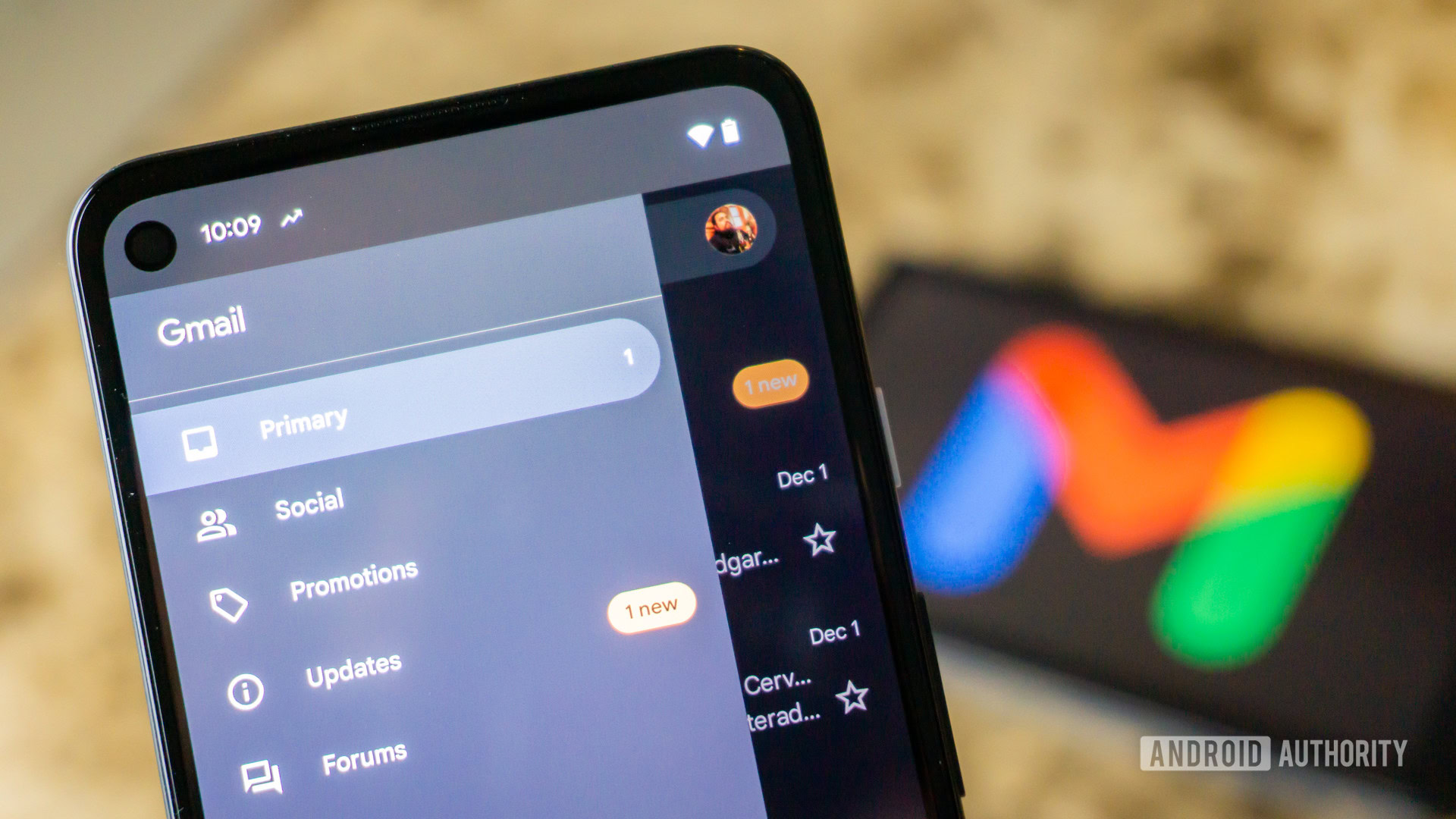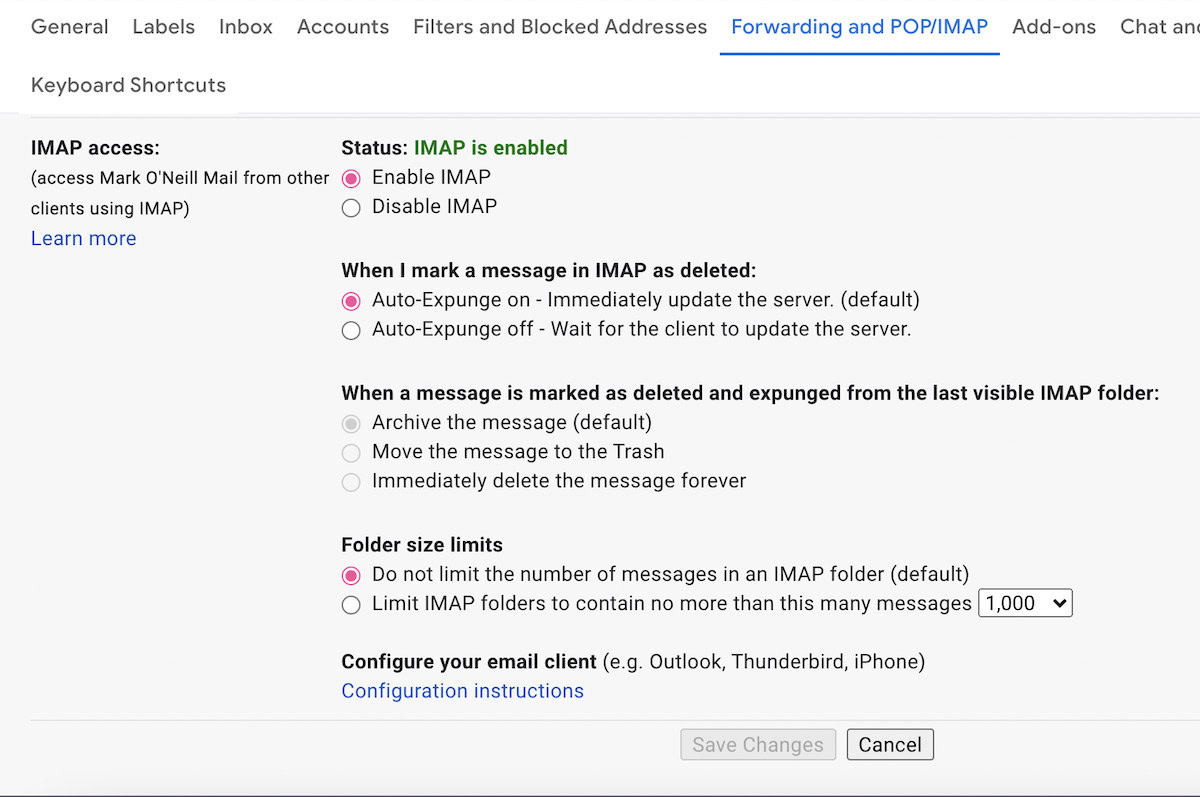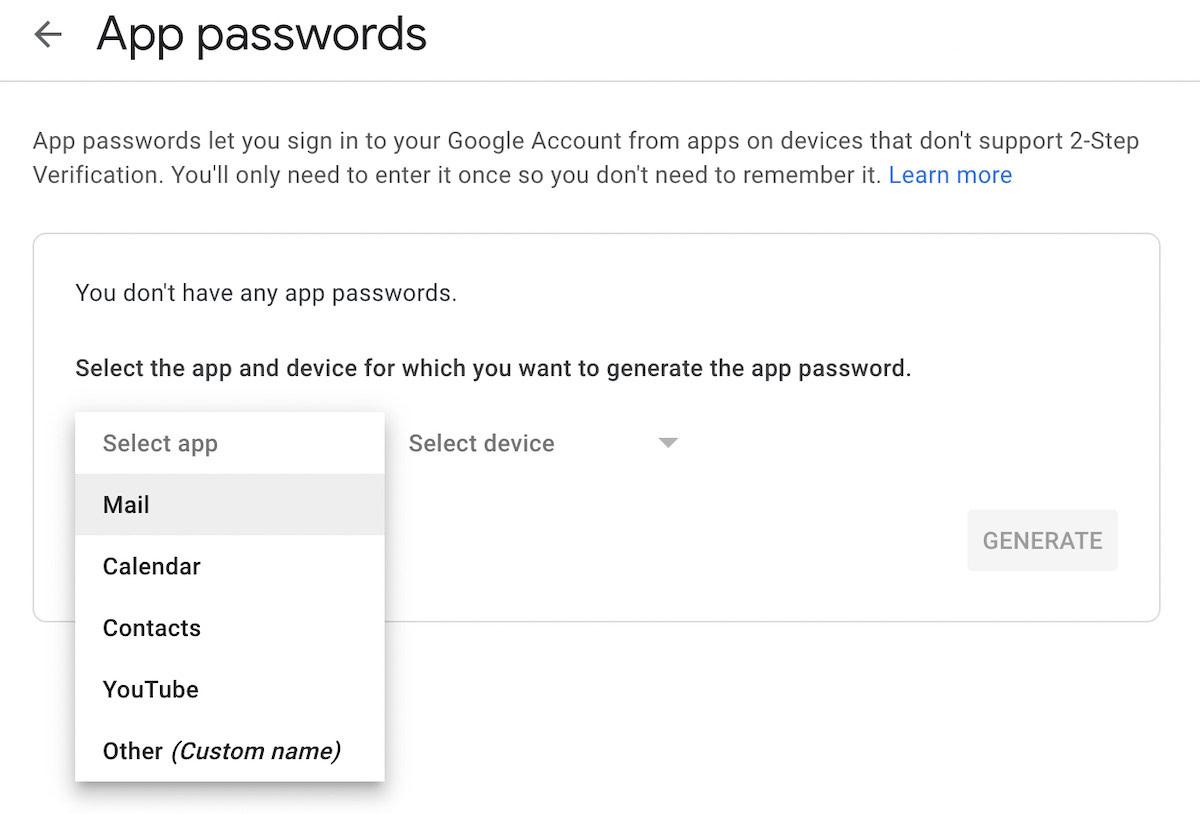Affiliate links on Android Authority may earn us a commission. Learn more.
How to configure Gmail SMTP settings
If you want to use a desktop email client like Thunderbird or Outlook to send emails from your Gmail address, you must configure Gmail’s SMTP settings. While some email clients do this automatically when you enter your login credentials, some require manual configuration. This article will give you the Gmail SMTP settings you will need to send emails from whichever email client you choose. The process is easy, takes less than a minute, and requires no technical knowledge at all. All you need to know are the correct settings and where to enter them.
QUICK ANSWER
To configure your Gmail SMTP settings, go into the settings of the desktop email client and look for the SMTP section. Then enter the details below in this article. If you have two-factor authentication set up on your Gmail account, the password needs to be replaced by an app-specific password from your Gmail security settings.
JUMP TO KEY SECTIONS
What is SMTP?

SMTP stands for Simple Mail Transfer Protocol. This is a tool used to send emails from an external email client. For example, if you want to be able to use your Gmail account using Outlook, you’ll need to set up your Gmail SMTP settings on Outlook. If you also want to receive email using a third-party client, you’ll also need to set up your Gmail IMAP settings.
What is IMAP?
IMAP stands for Internet Message Access Protocol. It is meant as a replacement for the much older POP protocol. With POP, messages were downloaded to one computer, and all replies stayed on that computer — the online web versions were always left untouched. However, with IMAP, messages are synchronized between the email web service (in this case, Gmail) and your local machine. So you can switch any time between using your local email copies and using the online web Gmail without any disruption or confusion.
When you receive a message, you can download it. When you reply to a message, it is uploaded to your web email account. This way, you can check your email on any machine and know it is synchronized and up-to-date.
How to set up your Gmail IMAP settings

We have already published a guide on setting up your Gmail IMAP settings. It is extremely simple. Go to your Gmail settings and then Forwarding and POP/IMAP. Toggle on Enable IMAP and leave the other settings alone. Save it and exit it. That’s that part done.
How to set up your Gmail SMTP settings
Now you need to enter your SMTP settings to use Gmail from a third-party email client. For this, go to the client’s settings and enter the following SMTP settings:
| Incoming Mail (IMAP) Server | imap.gmail.com Requires SSL: Yes Port: 993 |
| Outgoing Mail (SMTP) Server | smtp.gmail.com SSL: Yes TLS: Yes (if available) Authentication: Yes Port for SSL: 465 Port for TLS/START TLS: 587 |
| Full Name or Display Name | Your name |
| Account Name, User name, or Email address | Your full email address |
| Password | Your password |
Depending on your email client, some of the information may not be required. For example, Thunderbird doesn’t ask for your name. Just enter what it asks for.
Getting an app-specific password from Gmail

If you are using two-factor authentication — and you should be — then entering your regular Gmail password into the external email client is obviously not going to work. In this case, you’re going to need something called an app-specific password. This is where you grant permission for an app — in this case, the email client — access to your account that bypasses the two-factor authentication. This access can be revoked by you at any time, so there is no security risk involved.
To get one, go to the App Passwords section of your Google account, drop down the menu, and select Mail and Generate. Enter the password given into the external email client’s password field. Bear in mind that once you close the App Passwords page, you can never see this unique password ever again for security reasons. So make sure it works before you close the page; otherwise, you must cancel it and redo it.
Everything should now be working, although it may take some time for your emails to synchronize if you have many of them in your Gmail account. Go ahead and send a test email and see if everything is working.
Remember that the Gmail SMTP settings do have a sending limit. It’s in place to prevent spamming. You can only send a total of 500 emails per day to as many as 500 recipients per email. This is probably more than enough for the average user. If not, you shouldn’t be using Gmail as your email provider.
If you’re looking for a good email app or client, you should check out our list of the best email apps available for Android.
FAQs
If you have ruled out mistyping the password, then it is likely you have two-factor authentication enabled on your Gmail account. In this case, the password alone will not gain access to your account. To get past two-factor authentication, you need an app-specific password from your Gmail security settings. You can revoke this app-specific password and/or regenerate it anytime without needing to change the actual Gmail password.